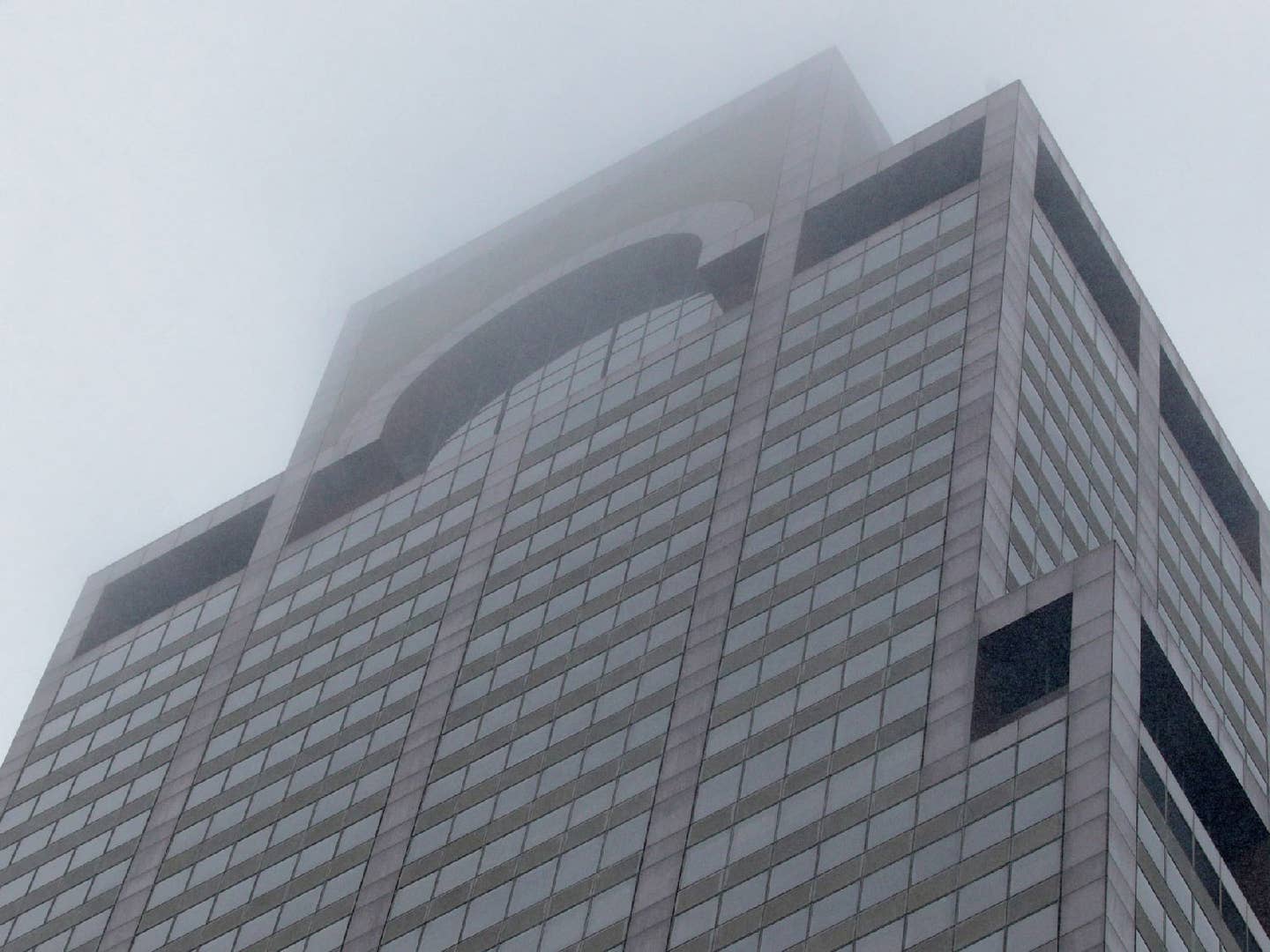
The Agusta A109E crashed onto the roof of a skyscraper at 787 7th Ave. in New York City on Monday. Courtesy KFLI
National Transportation Safety Board investigators are on the scene attempting to determine what caused an Augusta 109E helicopter to crash onto the rooftop of a Manhattan skyscraper on Monday afternoon, killing the pilot and causing a fire atop the building that briefly caused panic for those inside and on the streets below.
The corporate helicopter, N200BK, owned by American Continental Properties, took off at 1:32 p.m. from the East 34th Street heliport bound for its home base at Linden Airport in New Jersey.
The weather at the time appears to have played a role, with reports of one-half-mile visibility and a ragged 400-foot overcast.
After the helicopter took off, it flew around the southern tip of Manhattan past Battery Park and then was seen flying erratically over the Hudson River. Video of the helicopter posted on Twitter shows the helicopter briefly going out of control in a steep nose-down attitude before the pilot regained control and then, for unknown reasons, began climbing and disappearing into the clouds above.
Eleven minutes after the flight began, the helicopter crashed onto the skyscraper rooftop near Rockefeller Center.
The pilot, Tim McCormack of Clinton Corners, New York, held a commercial helicopter pilot certificate but not an instrument rating, according to FAA records. The helicopter was fully IFR equipped with an autopilot, according to a pilot who worked for the company that owned it.
After dropping off the owner of the helicopter, a wealthy New York real estate developer, the pilot reportedly waited at the 34th Street heliport for weather conditions to improve before departing.
Accident investigators will want to review the videos of the helicopter to determine why the pilot initially appears to have lost control and also why after regaining control he then climbed into the clouds.
A mechanical problem or pilot incapacitation are possible explanations, as is the reduced visibility that may have disoriented the pilot. The crash investigation could take up to a year to complete.
FAA regulations allow helicopters to operate in the airspace around New York City with as little as a half-mile visibility and clear of clouds, meaning the flight may have been operating legally before the pilot climbed into the clouds.
Reports say the pilot was not in contact with ATC at the time.

Subscribe to Our Newsletter
Get the latest FLYING stories delivered directly to your inbox






